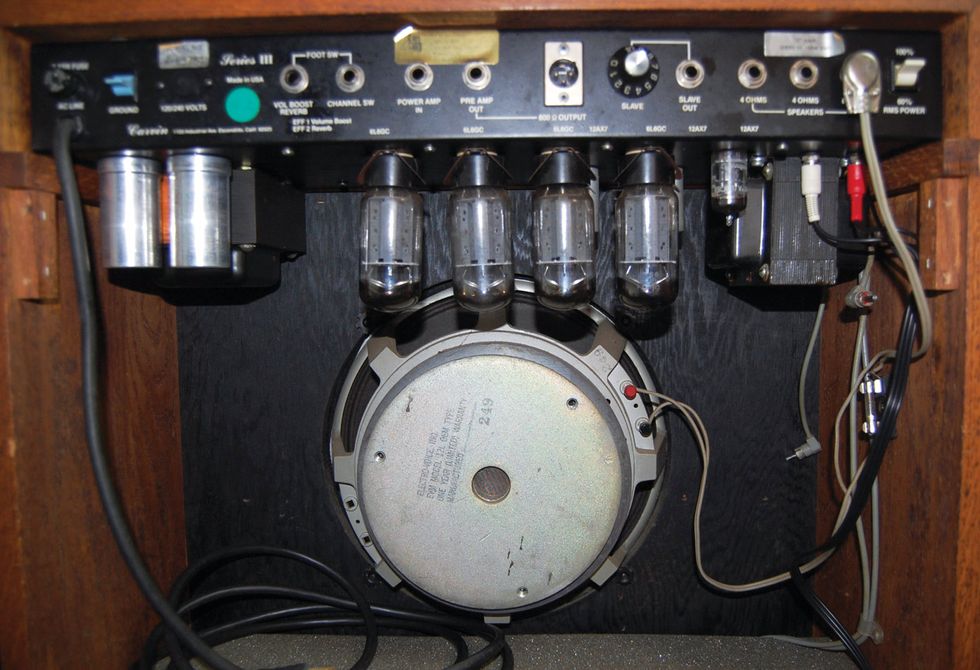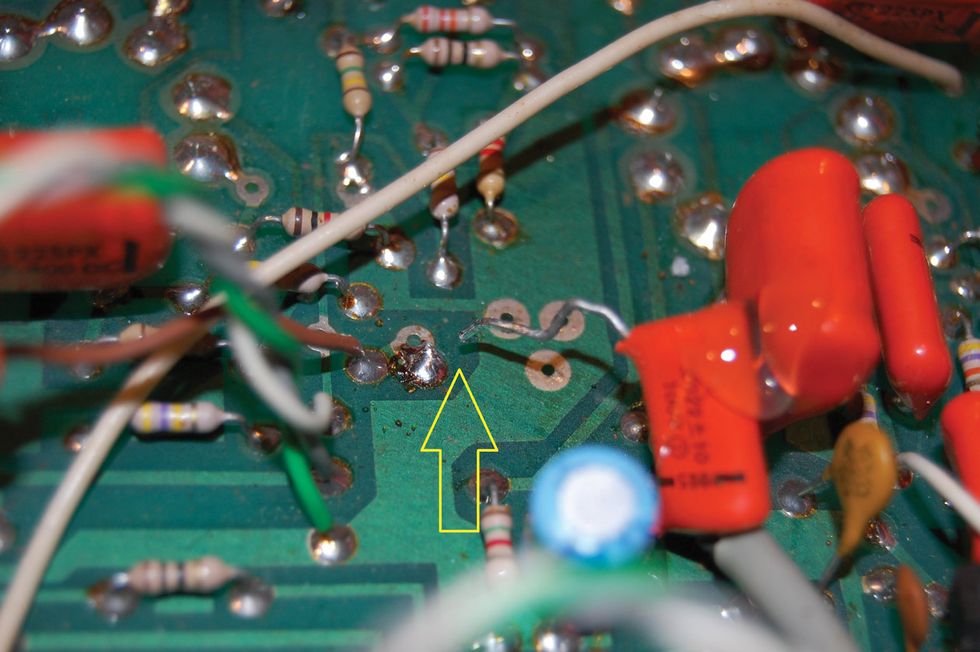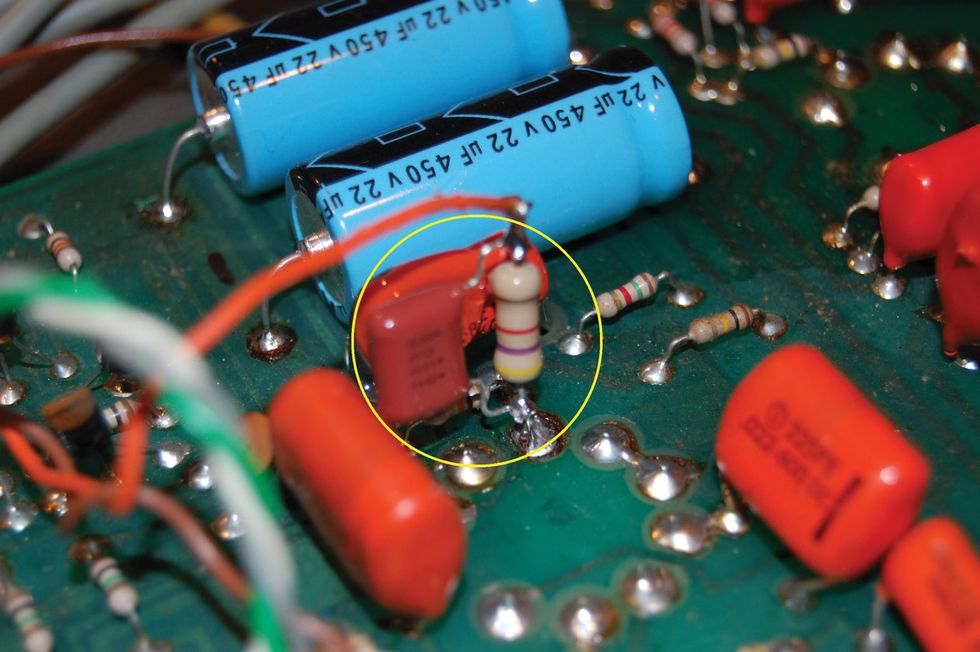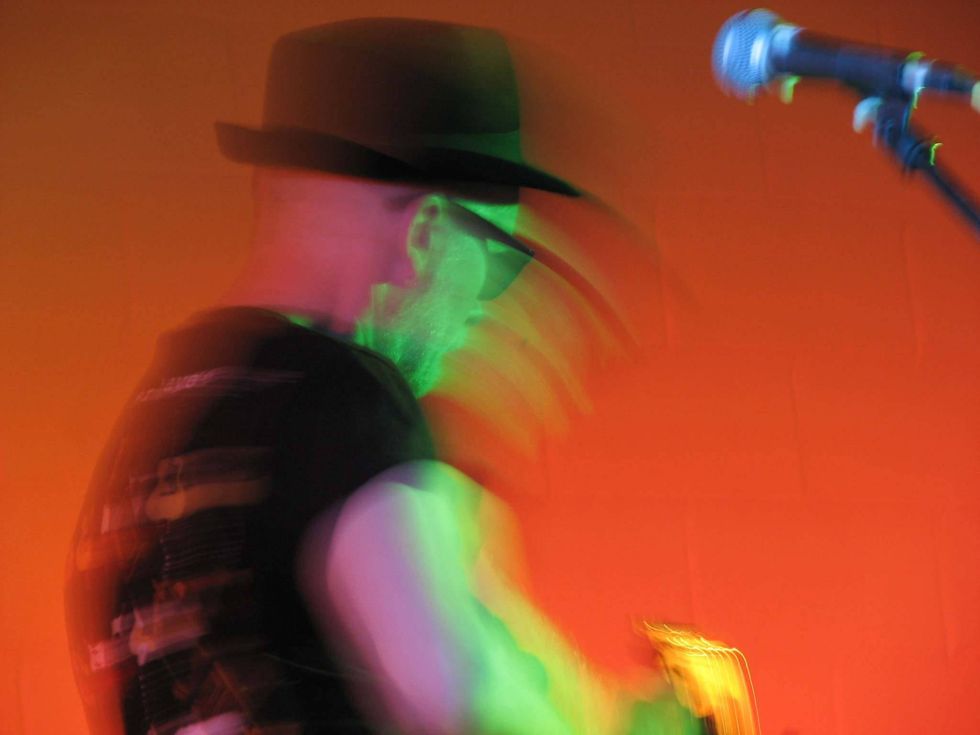I know this column is called Ask Amp Man, but after writing it for a crazy number of years, the questions tend to start repeating. That’s why I’ve been writing about some cool amp projects that cross my bench. Some interesting questions have come in lately, so I’ll probably get to them soon, but this month I have for you an amp that I don’t see too often. It was made in the early ’80s, when some manufacturers were trying to compete with the big “M” (the one in Petaluma, California—not in the U.K.) by coming up with their own versions of amps that looked similar but definitely had their own take on an overdriven gain channel. Here’s one that “boogied” along: the Carvin Series III X.
As you can see from the picture, this one borrowed its looks from its competitor’s custom-shop amps, utilizing a cane grille cloth and a red-oak hardwood cabinet. It even went so far as to use an OEM EV 12L speaker, as was typically found in that other company’s popular combo of the time. While the subsequent generation of Carvin X amps typically utilized EL34 output tubes, this series used 6L6s in yet another nod to the competitor. Two switchable channels, reverb, and, of course, a 5-band EQ round out the visual comparisons. And that’s pretty much where the similarity ends. Now let’s take a look at some of the differences.
A rear view displays the EV 12L speaker and array of 6L6 power tubes and three 12AX7s. The reverb is solid-state, driven by a pair of discreet transistors.
Solid-state of the union. The first thing you notice when looking at the tube compliment is that the amp only has three preamp tubes. While this is certainly enough to achieve the typical amount of gain for the era, it’s not enough to support the onboard reverb. That’s because this amp is a hybrid: a mix of tube and solid-state circuitry. A pair of discrete transistors drive the reverb tank, which I think may be more reliable than driving the tank with IC chips, as is pretty typical today.
While all the overdrive in the amp is developed strictly with tubes, there are a few parts of the audio path that involve solid-state design. The first is the tone controls. Traditional tone controls can only attenuate (cut) their respective frequencies. The bass, middle, and treble controls in this Carvin amp are IC driven and are active controls, which means they can boost, as well as cut, frequencies.
Photo 1 — Amp Man suggests lifting one end of the wire coming from the push-pull pot on the master volume so the sound of the amp opens up—restoring its high frequencies.
Pretty cool, but setting them can be a bit more critical than your typical tube amp. The other part of the signal path that utilizes solid-state circuitry is, of course, the EQ, which also can be used to cut or boost frequencies. The EQ is assignable to either the rhythm or lead channel, but not both. This is not atypical, but if you think about it, it is a bit strange, as you cannot use the EQ to establish the signature tone of the amp. It can only be used for making substantial tonal changes to either channel, which can be nice—and, with the “M” amps of this era, necessary for the overdrive channel, in my opinion—but is not really necessary in this amp. Lastly, the presence control in this Carvin works in the feedback loop, as in most traditional tube amps, but is changed in the later X series amps to be included as part of the active tone controls. So far, this is a cool amp, but let’s get into it and make a few tweaks so it becomes even cooler and more usable.
Ins and outs. The first thing you hear about this amp is that it has its own sound. This is immediately noticeable in the rhythm channel. It has a very full bottom end and a nice top end, but doesn’t sound like a traditional F-style clean. That’s not to say it can’t, as that’s where the EQ can come in handy, and I think the clean sound is very unique and useable—especially with the bright function engaged. Now let’s switch over to the lead channel, as this is where the amp can stand some improvement. The lead mode master volume control is a push-pull pot and has two options: normal (in) and pull for “Hi Lead.” In Hi Lead mode, the drive channel is very useable and matches relatively well with the rhythm channel, but in the in-position normal mode, it is, in my opinion, unusable. It’s extremely dark and sounds like someone threw a few moving blankets over the amp. Here’s where we can do a few changes to make this amp sound better.
Photo 2 — Wanna match the tone on both channels? Our columnist suggests removing the 22 µF capacitor and replacing it with a 4.7k resistor with a 0.022 µF capacitor in parallel.
If we follow the schematic, or better and easier yet, the wires coming from the push-pull switch on the rear of the master volume pot, we see that they connect to two different capacitors. One shunts most of the high frequencies to ground. This one needs to go! Simply lift one end of the capacitor from the circuit board and you’re good to go (Photo 1). If you follow the other wire, you’ll see that it connects to a 22 µF capacitor whose other end is attached to pin 3 of V1. When this cap is connected via the switch to ground, it adds a considerable amount of gain to this stage—especially to the bottom end.
The problem is, there is so much gain that the bottom end starts to choke at higher gain settings, and it especially does so when the output power switch is set to 60 percent. To alleviate this, remove this cap and replace it with a 4.7k resistor with a 0.022 µF capacitor in parallel (Photo 2). Now, with the master volume on the lead channel pulled out in the Hi Lead mode, the tone of both channels matches very well. Pushing the Hi Lead pot in actually increases the gain in a very balanced way and gives the amp even more drive and sustain.
And there you have it: an amp whose boogie gives the competition a serious run for its money. Enjoy!















![Rig Rundown: Russian Circles’ Mike Sullivan [2025]](https://www.premierguitar.com/media-library/youtube.jpg?id=62303631&width=1245&height=700&quality=70&coordinates=0%2C0%2C0%2C0)







